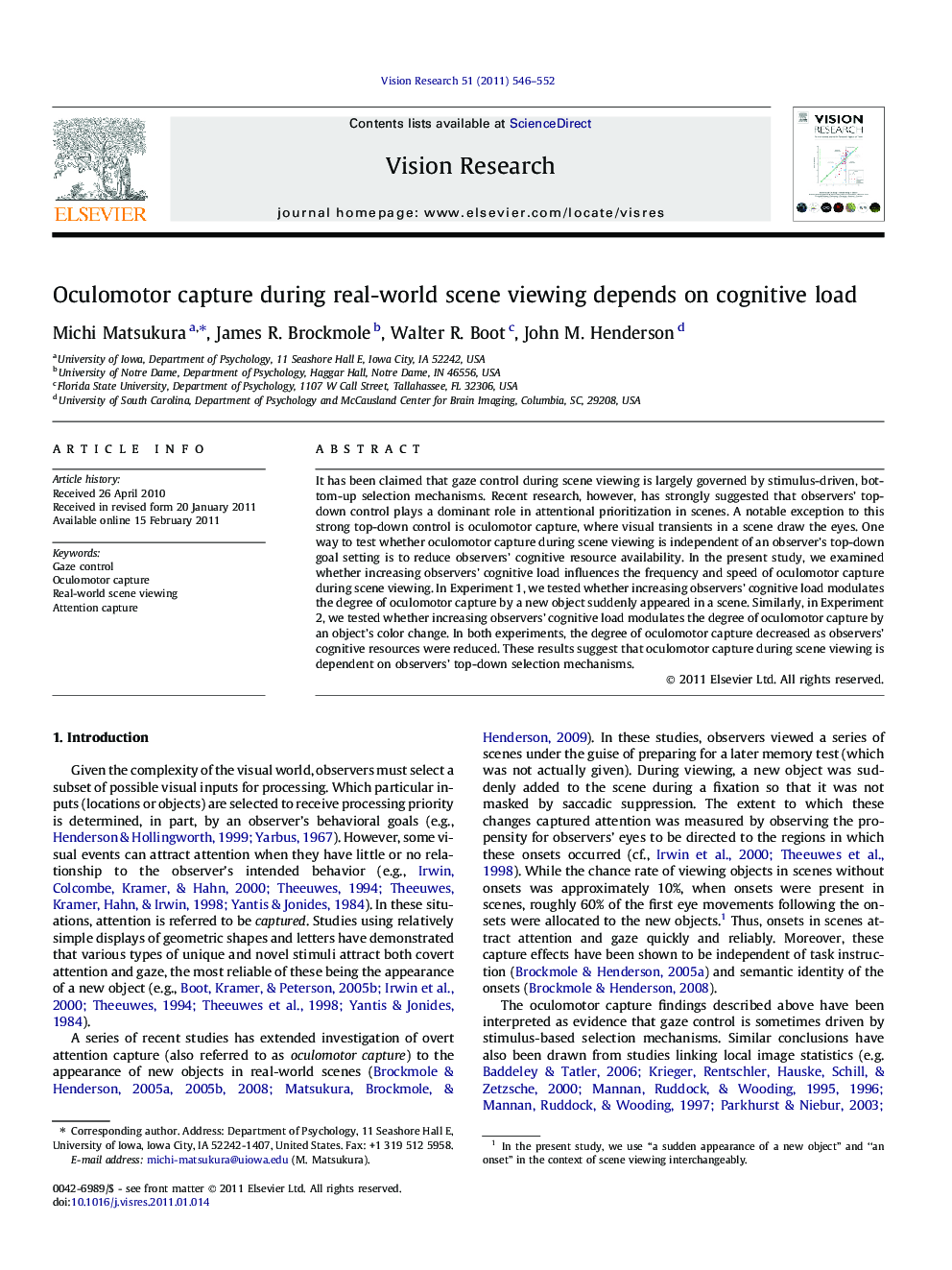| Article ID | Journal | Published Year | Pages | File Type |
|---|---|---|---|---|
| 4034161 | Vision Research | 2011 | 7 Pages |
It has been claimed that gaze control during scene viewing is largely governed by stimulus-driven, bottom-up selection mechanisms. Recent research, however, has strongly suggested that observers’ top-down control plays a dominant role in attentional prioritization in scenes. A notable exception to this strong top-down control is oculomotor capture, where visual transients in a scene draw the eyes. One way to test whether oculomotor capture during scene viewing is independent of an observer’s top-down goal setting is to reduce observers’ cognitive resource availability. In the present study, we examined whether increasing observers’ cognitive load influences the frequency and speed of oculomotor capture during scene viewing. In Experiment 1, we tested whether increasing observers’ cognitive load modulates the degree of oculomotor capture by a new object suddenly appeared in a scene. Similarly, in Experiment 2, we tested whether increasing observers’ cognitive load modulates the degree of oculomotor capture by an object’s color change. In both experiments, the degree of oculomotor capture decreased as observers’ cognitive resources were reduced. These results suggest that oculomotor capture during scene viewing is dependent on observers’ top-down selection mechanisms.
Research highlights► Observers viewed real-world scenes while performing a cognitively demanding auditory task. ► Increasing cognitive load reduced the frequency and speed of oculomotor capture. ► Oculomotor capture during scene viewing depends on observers’ cognitive load.
